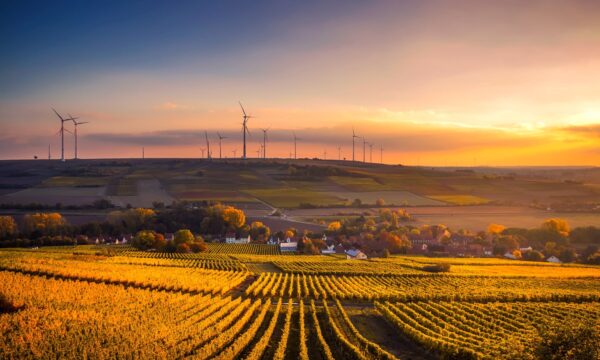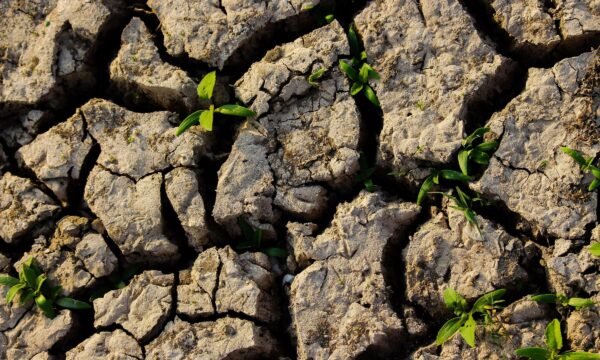by Dr Trevor Nicholls, CEO, CABI
At COP21 last week, the world’s leaders agreed on a way forward to manage climate change. Limiting global warming to less than two percent was undoubtedly a landmark decision and, for the first time, there was unanimous recognition that humans impact the climate and that humans must do something about it.
I was honoured to deliver an address to the UNFCCC on CABI’s work in agriculture and the environment, specifically highlighting our knowledge and science-based initiatives like Plantwise that help smallholder farmers living in rural communities grow more and lose less of their produce, and embrace climate smart agricultural processes.
Talking about these projects, it struck me how agriculture has been caught in the centre of the COP21 debate as both a cause and a victim of climate change, and how – as the foundation of food security – agriculture must be carefully managed. A perfect storm is brewing of increased global warming and growing global population, which places pressure on agriculture to produce more outputs using fewer resources like land and water. How we feed a world of 9 billion people by 2050, while reducing greenhouse gas emissions, is one of the most important questions we must ask and answer.
It is important to keep in mind that agriculture can also be part of the solution through initiatives like carbon capture, especially agroforestry, and through a more holistic, ‘landscape’ approach to land use. This was of the main points that struck me in Paris.
The benefit of the ‘landscape’ approach
The Global Landscapes Forum – one of the largest side events at COP21 – made a very strong case for tackling climate change taking the ‘landscape’ approach. This approach is supported by the Association of International Research and Development Centers for Agriculture (AIRCA). It considers the diversity of all people who interact with the environment or landscape, whether they use it for agriculture or not, creating climate smart solutions to land use that take into account different needs. This is important, because international priorities like the Sustainable Development Goals, for example, focus sometimes on the environment, sometimes on food security. Yet, for many farmers, making a separation between the two will be difficult, especially for smallholders who may lack access to the type of science-based knowledge that helps them find the right balance. Should they grow staple crops, or trees, or use their land for eco-tourism?
I firmly believe that we need to think about development initiatives at the landscape level, so that discussions that are typically siloed can be integrated into a complete geographical solution. There needs to be more joined up action if the living standards of poor rural communities are to be raised while, at the same time, reducing greenhouse gas emissions. At COP21, it was sobering to see just how many different initiatives and organisations are largely working on the same issue: climate change and poverty reduction. Perhaps there is a case for creating a clearing house mechanism that focuses on partnership and delivers more synergy.
Using metrics to find the right balance
When trade-offs must be made, better measurement of the problems and solutions becomes essential, not just metrics in terms of financial capital, but also environmental and social capital, so that we can start to understand how to achieve the most effective and balanced results. We need to take a scientific approach, collecting reliable data so that we know which approaches have the maximum effect. Initiatives like the Global Open Data for Agriculture and Nutrition (GODAN) help make agricultural and nutritional data available, accessible and usable worldwide, opening up the kind of information that can aid decision-making and the reaching of well-balanced solutions.
We also need to come together to apply this information. Agribusinesses, environmentalists and NGOs will look at the solutions to climate smart agriculture through a different prism, each one wanting to maximize the return on their capital investment. But what we need is for all groups to come together and agree to the most effective balanced solutions.
Taking a holistic view
The private sector also has an important role to play in the landscape partnership, especially major food chains. At the GLF, agro-food companies recognized that supply chain sustainability relies on millions of smallholder farmers and goes well beyond issues of certifying produce for trade, and towards helping farmers transition to a viable form of climate smart agriculture. How can they grow more produce in the face of climate change, while adopting climate friendly farming methods, adhering to international phytosanitary standards, and gaining access to lucrative markets that safeguard their livelihoods? It is only when the right balance is found that smallholder farming will become truly sustainable.
When we talk about landscapes, we must also not forget to include healthy soil and access to water; subjects that perhaps gained less attention at COP21.
Looking to the future …
In future, partnerships will undoubtedly become more important as we tackle the effects of climate change. Placing agriculture into a ‘landscape approach’ paradigm will help this happen. And while, in Paris, it was clear that agriculture may be seen as both a contributor to and a victim of climate change, I firmly believe it is also a vital part of the solution.
Related News & Blogs
Horizon scanning for climate-driven pest threats can prevent biodiversity loss
On International Day for Biological Diversity, CABI’s Dr MaryLucy Oronje looks at horizon scanning and pest preparedness – approaches that help prevent the spread of invasive species, a major threat to biodiversity. Horizon scanning for invasive pests…
22 May 2025





